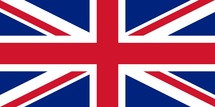
Please find below a chart for the base rate, Bank of England (BoE) main interest rate. The chart begins in 1974. The BoE is responsible of the monetary policy in the whole UK.
The BoE conducts its monetary policy by raising or lowering the base rate (reference for refinancing operations). In normal times, the overnight interbank market rate in the UK is very close to the base rate. The base rate is set each month. The BoE’s Board consists of 9 voting members including the President.
The BoE has for main mandate to maintain price stability in the UK. BoE’s definition of price stability is a rise in prices close at 2% year-on-year on e medium-term horizon (index: Consumer Price Index). The BoE pursue an inflation targeting monetary policy. The inflation could fluctuate on the short run in a range of +/- 1% around the target (i.e. form 1% to 3%).
If the inflation moves outside the range, the BoE Governor has to write a letter to the Chancellor of the Exchequer explaining why it is happening and the measures taken in order to correct this problem.
In end of 2008, confronted to the worst crisis since the Great Depression, the BoE lowered its base rate close to zero (0.5%). The necessity to continue to stimulate the economy forces the BoE to launch a quantitative easing policy (£200 bn of asset purchases).
The BoE conducts its monetary policy by raising or lowering the base rate (reference for refinancing operations). In normal times, the overnight interbank market rate in the UK is very close to the base rate. The base rate is set each month. The BoE’s Board consists of 9 voting members including the President.
The BoE has for main mandate to maintain price stability in the UK. BoE’s definition of price stability is a rise in prices close at 2% year-on-year on e medium-term horizon (index: Consumer Price Index). The BoE pursue an inflation targeting monetary policy. The inflation could fluctuate on the short run in a range of +/- 1% around the target (i.e. form 1% to 3%).
If the inflation moves outside the range, the BoE Governor has to write a letter to the Chancellor of the Exchequer explaining why it is happening and the measures taken in order to correct this problem.
In end of 2008, confronted to the worst crisis since the Great Depression, the BoE lowered its base rate close to zero (0.5%). The necessity to continue to stimulate the economy forces the BoE to launch a quantitative easing policy (£200 bn of asset purchases).
BoE refi rate | Interest rate of the Bank of England
You need to upgrade your Flash Player
 World GDP
World GDP



